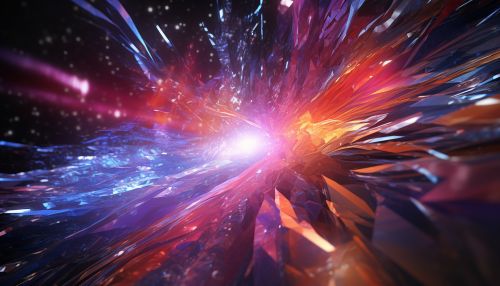The Science of Subatomic Particles and High-Energy Physics
Introduction
The field of high-energy physics, also known as particle physics, is a branch of physics that studies the nature of the particles that constitute matter and radiation. It is a complex and fascinating field, delving into the smallest known particles and the interactions between them. The primary focus of this field is on subatomic particles, which include particles smaller than an atom: protons, neutrons, and electrons, as well as particles that are even smaller, such as quarks and leptons.


Subatomic Particles
Subatomic particles are particles that are smaller than an atom. They are the building blocks of matter and are categorized into two groups: elementary particles, which are not made of other particles, and composite particles, which are made up of other, smaller particles.
Elementary Particles
Elementary particles are the smallest known building blocks of the universe. They include quarks, leptons, and gauge bosons, which are responsible for the fundamental forces of nature.
Quarks are the most basic particles and come in six types, or "flavors": up, down, charm, strange, top, and bottom. They combine in various ways to form larger particles, such as protons and neutrons.
Leptons are another type of elementary particle. The most well-known lepton is the electron, which orbits the nucleus of an atom. Other leptons include muons, taus, and their associated neutrinos.
Gauge bosons are particles that carry the fundamental forces of nature. The most familiar of these is the photon, which carries the electromagnetic force. Other gauge bosons include the W and Z bosons, which carry the weak nuclear force, and gluons, which carry the strong nuclear force.
Composite Particles
Composite particles are made up of other, smaller particles. The most familiar composite particles are protons and neutrons, which are made up of quarks. Other composite particles include mesons, which are made up of a quark and an antiquark, and baryons, which are made up of three quarks.
High-Energy Physics
High-energy physics is the study of the nature of particles and their interactions at high energies. It is a field that seeks to understand the fundamental nature of the universe by studying its smallest components.
Particle Accelerators
The primary tool used in high-energy physics is the particle accelerator. These machines accelerate particles to near the speed of light and then collide them together. The resulting high-energy collisions create new particles and allow scientists to study the fundamental forces and particles of the universe.
The Standard Model
The Standard Model is the theoretical framework that describes the fundamental particles and their interactions. It is a well-tested theory that accurately describes the behavior of particles at the energies currently accessible to particle accelerators. However, it is not a complete theory of the universe, as it does not include gravity or account for the dark matter and dark energy that make up most of the universe.
Future of High-Energy Physics
The field of high-energy physics continues to evolve and develop, with new discoveries and theories continually challenging and expanding our understanding of the universe. Future directions for the field include the search for new particles beyond the Standard Model, the study of dark matter and dark energy, and the development of new technologies and techniques for particle acceleration and detection.
